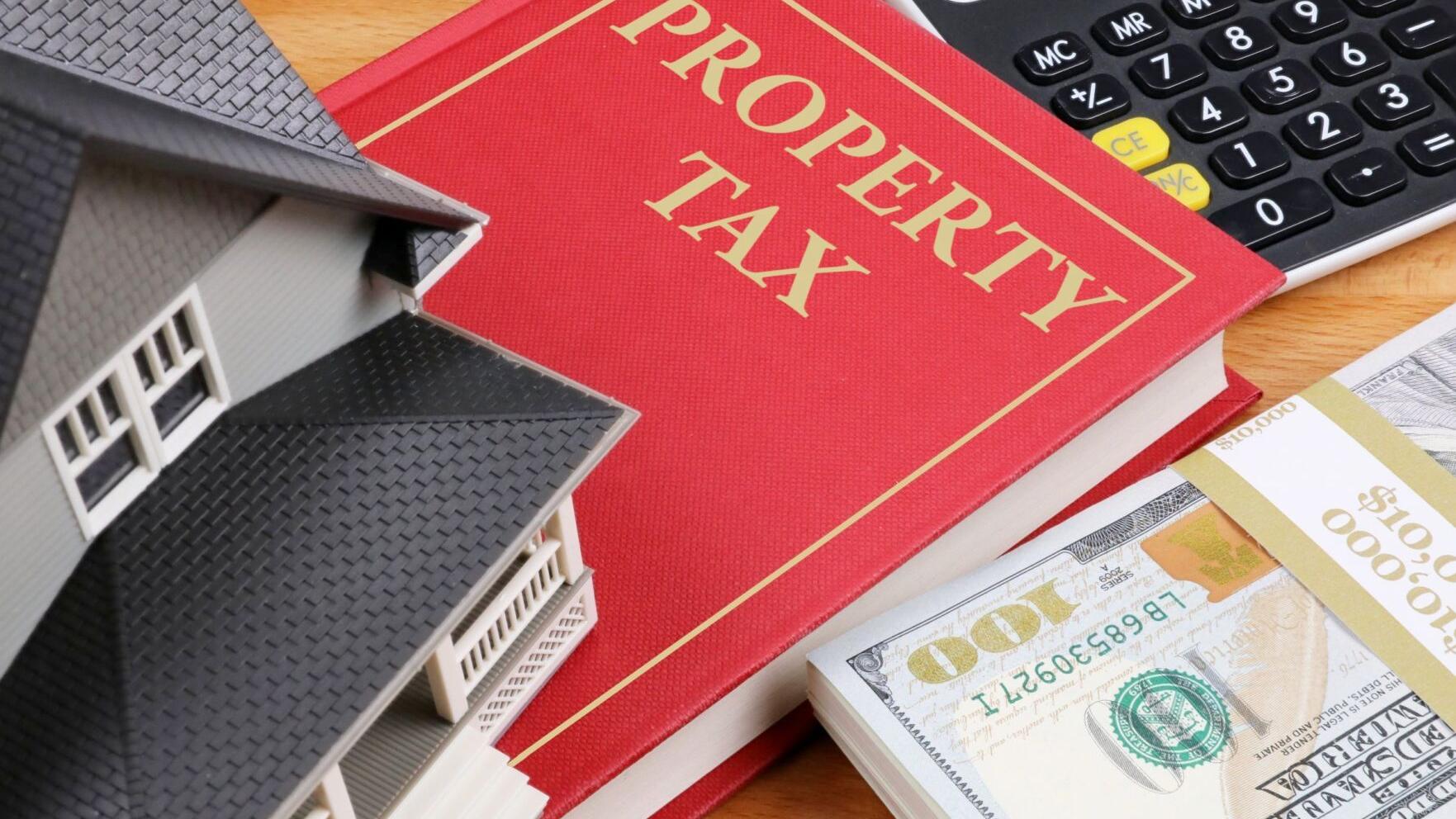Home>Home Maintenance>What Are Property Assessment Caps


Home Maintenance
What Are Property Assessment Caps
Modified: March 6, 2024
Learn about property assessment caps and how they affect your home maintenance. Find out how these caps can potentially save you money on property taxes.
(Many of the links in this article redirect to a specific reviewed product. Your purchase of these products through affiliate links helps to generate commission for Storables.com, at no extra cost. Learn more)
Introduction
When it comes to owning a property, there are various costs and expenses that homeowners are responsible for. One of the most significant financial obligations is property taxes, which are imposed by local government authorities to fund essential services and infrastructure.
Property taxes are typically calculated based on the assessed value of a property, which can fluctuate over time due to changing market conditions and property improvements. However, in an effort to provide homeowners with some financial relief and stability, many jurisdictions have implemented property assessment caps.
Property assessment caps, also known as assessment limitations or assessment freezes, are mechanisms that limit the increase in assessed property values, and thereby limit the corresponding increase in property taxes. These caps aim to protect homeowners from substantial tax hikes resulting from skyrocketing property values in rapidly appreciating markets.
The purpose of property assessment caps is to provide homeowners with predictability and stability in their property taxes, ensuring that they do not face sudden and exorbitant increases as a result of rising property values. By placing a cap on the assessed value, homeowners can better plan and budget for their property tax expenses.
There are several types of property assessment caps that can be implemented, and their specific structures and conditions vary depending on the jurisdiction. Some caps limit the increase in assessed value to a fixed percentage each year, while others tie the cap to the rate of inflation. Some jurisdictions even have a combination of both.
Like any policy measure, property assessment caps have their own set of advantages and disadvantages. On one hand, they provide stability and financial relief for homeowners, particularly those on fixed incomes or in areas with rapidly appreciating property values. On the other hand, they can create inequity in the tax burden among homeowners and result in revenue loss for local governments.
In this article, we will explore the different types of property assessment caps, discuss the pros and cons associated with them, provide examples of these caps in different jurisdictions, address the challenges and criticisms they face, and analyze their impact on property taxes.
Key Takeaways:
- Property assessment caps provide stability and predictability in property taxes, protecting homeowners from sudden and excessive tax hikes due to rising property values. This helps homeowners budget and afford to stay in their homes, preserving community stability.
- While property assessment caps offer financial relief to homeowners, they can create challenges for local governments by reducing tax revenue and potentially leading to tax inequity across neighborhoods. Policymakers must balance these factors to create effective property tax policies.
Read more: What Is Property Assessment Profile
Definition of Property Assessment Caps
Property assessment caps, also known as assessment limitations or assessment freezes, are mechanisms implemented by local jurisdictions to limit the rate at which property values can increase for the purpose of calculating property taxes.
These caps establish a maximum limit on the increase in assessed property values, and consequently, a limit on the corresponding property tax increase. The intention behind these caps is to provide homeowners with a level of predictability and stability in their property taxes, especially in markets where property values are rapidly appreciating.
Under normal circumstances, property assessments are conducted periodically to determine the current market value of a property. Assessors consider factors such as location, size, amenities, and comparable sales to assign a value to a property. This assessed value is then used to calculate property taxes.
However, without assessment caps in place, homeowners can face substantial tax increases if their property values surge due to market conditions or local development. This can cause financial strain, particularly for homeowners on fixed incomes or in areas experiencing significant gentrification.
Property assessment caps put a limit on how much the assessed value of a property can increase over a given period. The caps can be implemented in different ways and can vary depending on the jurisdiction. Some caps establish a maximum percentage increase in assessed value each year, while others tie the cap to the rate of inflation.
For instance, a jurisdiction might implement a 5% assessment cap, meaning that the assessed value of a property can only increase by a maximum of 5% each year, regardless of the actual increase in market value. This ensures that homeowners are protected from sudden and substantial property tax hikes resulting from rapidly appreciating markets.
Property assessment caps are typically intended to provide stability and financial relief for homeowners, especially those who have owned their homes for a long time or are in areas where property values tend to rise rapidly. However, it’s important to note that these caps can also create inequities in the distribution of the tax burden and pose challenges for local governments in terms of generating revenue.
Purpose of Property Assessment Caps
The primary purpose of property assessment caps is to provide homeowners with predictability and stability in their property taxes. By limiting the rate at which property values can increase for taxation purposes, these caps aim to protect homeowners from sudden and substantial property tax hikes resulting from rising property values.
One of the main benefits of assessment caps is the financial relief they provide to homeowners, particularly those on fixed incomes or in areas experiencing rapid appreciation in property values. Without assessment caps, homeowners could face significant increases in their property taxes due to market forces or local development, putting a strain on their budgets and potentially forcing them out of their homes.
Assessment caps ensure that homeowners are not penalized for the increased value of their properties. Instead of their property taxes skyrocketing in line with market appreciation, these caps limit the increase to a predetermined percentage or inflation rate. This allows homeowners to better plan and budget for their property tax expenses, providing them with stability and peace of mind.
Another important purpose of property assessment caps is to protect long-term homeowners who have built their lives and communities in areas where property values have significantly increased over time. Without assessment caps, these homeowners may find themselves unable to afford the property taxes on their own homes due to the skyrocketing values brought about by gentrification or other factors.
By providing stability in property taxes, assessment caps help to foster community stability as well. Homeowners can continue to afford living in their homes and retain their connection to the community, preventing displacement and maintaining the social fabric of the neighborhood.
Furthermore, property assessment caps also contribute to economic stability by reducing the uncertainty associated with unpredictable and potentially burdensome property tax increases. This stability can be attractive to potential homebuyers, encouraging homeownership within the community and supporting local real estate markets.
While the primary purpose of assessment caps is to protect homeowners from excessive property tax hikes, it is worth noting that these caps can also have implications for local governments. By limiting the increase in assessed values, assessment caps can result in reduced revenue for local authorities, making it challenging to fund essential services and infrastructure.
In summary, the purpose of property assessment caps is to provide homeowners with predictability and stability in their property taxes, protect long-term homeowners from excessive taxes due to rising property values, foster community and economic stability, and balance the financial burden between homeowners and local governments.
Types of Property Assessment Caps
Property assessment caps can be implemented in a variety of ways, depending on the jurisdiction and local regulations. Here are some common types of property assessment caps:
- Fixed Percentage Caps: Under this type of cap, the increase in assessed property value is limited to a fixed percentage each year. For example, a jurisdiction may have a 3% fixed percentage cap, meaning the assessed value of a property can only increase by a maximum of 3% annually, regardless of the actual market appreciation. This type of cap provides homeowners with a predictable and gradual increase in property taxes.
- Homestead Exemption Caps: Some jurisdictions offer homestead exemptions, which provide property tax relief to eligible homeowners by exempting a certain portion of their property value from taxation. These exemptions may have a cap on the maximum allowable exemptions, limiting the amount of assessed value that can be exempted. Homestead exemption caps can vary depending on factors such as age, income, and disability status.
- Inflation-based Caps: Inflation-based caps tie the increase in assessed property value to the rate of inflation. For example, if the rate of inflation is 2% in a given year, the assessed value of a property can only increase by a maximum of 2%. This type of cap ensures that property tax increases remain in line with general economic inflation, providing homeowners with a level of stability and preventing excessive tax hikes.
- Assessment Freeze Caps: Assessment freeze caps completely freeze the assessed value of a property for a specific period, such as 5 or 10 years. During the freeze period, the property value remains unchanged, regardless of any market appreciation. This type of cap offers homeowners long-term protection against property tax increases, ensuring that they do not face significant financial burdens due to rising property values.
- Value Band Caps: Value band caps apply different percentage limits depending on the assessed value of a property. For example, a jurisdiction may have a cap of 3% for properties valued below $500,000 and a cap of 2% for properties valued above $500,000. This type of cap aims to provide targeted relief to homeowners with lower-valued properties while still providing some limitation for higher-valued properties.
It is important to note that the specific types of property assessment caps and their implementation can vary widely from jurisdiction to jurisdiction. Some jurisdictions may opt for a combination of different types of caps to tailor their approach to their specific local circumstances.
Overall, property assessment caps serve to protect homeowners from sudden and excessive property tax increases, offering predictability, stability, and financial relief. By implementing different types of caps, jurisdictions can tailor their strategies to meet the unique needs of their homeowners and local real estate markets.
Pros and Cons of Property Assessment Caps
Property assessment caps have both advantages and disadvantages. Here, we will explore the pros and cons associated with these caps:
Pros
- Stability and Predictability: One of the main benefits of property assessment caps is that they provide homeowners with stability and predictability in their property taxes. Caps limit the increase in assessed property values, ensuring that homeowners do not face sudden and significant tax hikes due to rising property values. This stability allows homeowners to better plan and budget for their property tax expenses.
- Financial Relief for Homeowners: Assessments caps offer financial relief to homeowners, especially those on fixed incomes or in areas with rapidly appreciating property values. Without these caps, homeowners could face substantial increases in their property taxes, potentially causing financial strain and making it difficult to afford their homes.
- Protection for Long-Term Homeowners: Assessment caps protect long-term homeowners who have built their lives and communities in areas where property values have significantly increased over time. These homeowners are able to remain in their homes without being subjected to excessive property tax burdens that can arise from gentrification or other factors.
- Preservation of Community Stability: By providing stability in property taxes, assessment caps help to preserve community stability. Homeowners can afford to stay in their homes, maintaining their connections to the community and preventing displacement. This helps to retain the social fabric of neighborhoods and promote long-term community cohesion.
- Economic Stability: Property assessment caps contribute to economic stability by reducing uncertainty associated with unpredictable and potentially burdensome property tax increases. This stability can make homeownership more attractive to potential buyers, supporting the local real estate market and fostering economic growth in the community.
Cons
- Inequity in Tax Burden: One of the main criticisms of property assessment caps is that they can create inequity in the distribution of the tax burden. Homeowners with similar properties may end up paying different amounts of property taxes based on the timing of their property assessments. A homeowner who recently purchased their property may face higher taxes compared to a long-term homeowner whose property assessed value is capped.
- Reduced Revenue for Local Governments: Because assessment caps limit the increase in assessed property values, they can result in reduced revenue for local governments. This reduction in revenue can make it challenging for local authorities to fund essential services and infrastructure, potentially leading to budgetary constraints and cutbacks in public services.
- Potential for Tax Inequity Across Neighborhoods: Assessment caps can lead to tax inequity across different neighborhoods within a jurisdiction. As property values rise at different rates in different areas, some neighborhoods may benefit more from assessment caps than others. This can result in disparities in tax burdens across communities, potentially exacerbating existing inequalities.
- Lack of Flexibility: Assessment caps can limit the ability of local governments to respond to changing economic conditions and adjust property tax rates accordingly. In dynamic real estate markets, caps may hinder the ability to capture the full potential tax revenue from increasing property values, which could be used to fund essential public services.
- Potential for Market Distortion: Property assessment caps may contribute to market distortion by artificially constraining property values. This can impact housing affordability and market dynamics, making it challenging for prospective buyers to enter the market and exacerbating existing housing shortages.
It is essential to consider these pros and cons when evaluating the implementation of property assessment caps. Striking a balance between protecting homeowners and ensuring adequate revenue for local governments is crucial in designing effective property tax policies.
Examples of Property Assessment Caps in Different Jurisdictions
Property assessment caps, or similar mechanisms, are implemented in various jurisdictions across the globe. While the specifics of these caps may differ from one jurisdiction to another, the objective remains the same: to provide homeowners with stability and protection from excessive property tax increases. Here are some examples of property assessment caps in different jurisdictions:
California, United States
In California, Proposition 13, passed in 1978, imposed a cap on property tax assessments. Under this cap, assessed property values are limited to an annual increase of 2% or the rate of inflation, whichever is lower. This has provided homeowners in California with stability in their property taxes, helping to mitigate the impact of rapidly appreciating property values in the state’s real estate market.
Read more: What Is MPAC Property Assessment Notice
Portugal
In Portugal, property assessment caps, known as Valor Patrimonial Tributário (VPT), limit the increase in assessed property values. The cap is calculated based on a fixed percentage set by law, which accounts for inflation and market trends. The purpose of the cap is to prevent sudden and drastic increases in property tax assessments, providing homeowners with stability and predictability in their tax obligations.
Australia
In Australia, some jurisdictions have implemented assessment caps on property taxes. For example, in New South Wales, the Land Valuation Cap applies to residential properties with a capped increase in land values. The cap limit is determined by the New South Wales Valuer General and aims to provide homeowners with protection against substantial increases in land values and corresponding property tax assessments.
Singapore
In Singapore, the Annual Value (AV) system is used to calculate property tax assessments. The AV of a property is capped to ensure that tax increases remain moderate even if property values rise significantly. The cap is dependent on the property type and is revised periodically to ensure fairness and affordability for homeowners in Singapore’s fast-paced real estate market.
Denmark
In Denmark, property tax assessments are subject to value corrections known as “value freezes.” Under this system, the assessed value of a property can be frozen for a specific period, often five years, preventing drastic increases in property tax assessments due to market appreciation. This provides homeowners with stability in their property taxes and protects them from sudden and significant financial burdens.
These examples highlight the different approaches taken by jurisdictions to implement property assessment caps. Whether through fixed percentage caps, inflation-based caps, assessment freezes, or other mechanisms, the objective remains to provide stability and protection to homeowners, balancing the desire for predictable property taxes with the need for adequate revenue to fund local services and infrastructure.
Read more: What Does Property Assessment Mean
Challenges and Criticisms of Property Assessment Caps
While property assessment caps have their benefits, they also face challenges and criticisms. It is important to consider these factors when evaluating the effectiveness and potential drawbacks of implementing assessment caps. Here are some of the challenges and criticisms associated with property assessment caps:
1. Inequity in Tax Burden:
One of the main criticisms of property assessment caps is that they can create inequities in the distribution of the tax burden. Homeowners with similar properties may end up paying different amounts of property taxes based on the timing of their property assessments. This can lead to situations where a homeowner who recently purchased their property may face higher taxes compared to a long-term homeowner whose assessed value is capped. This inequity can be seen as unfair and may contribute to an imbalance in the tax burden across communities.
2. Reduced Revenue for Local Governments:
Property assessment caps can result in reduced revenue for local governments. By limiting the increase in assessed property values, caps restrict the potential tax revenue that local governments can collect. This reduction in revenue can make it challenging for local authorities to fund essential services and infrastructure, potentially leading to budgetary constraints and cutbacks in public services.
3. Potential for Tax Inequity Across Neighborhoods:
Assessment caps can lead to tax inequity across different neighborhoods within a jurisdiction. As property values rise at different rates in different areas, some neighborhoods may benefit more from assessment caps than others. This can result in disparities in tax burdens across communities, potentially exacerbating existing inequalities and creating tension between neighborhoods.
4. Lack of Flexibility:
Property assessment caps can limit the flexibility of local governments to respond to changing economic conditions and adjust property tax rates accordingly. In dynamic real estate markets, caps may hinder the ability to capture the full potential tax revenue from increasing property values, which could be used to fund essential public services. This lack of flexibility can make it challenging for local governments to adapt to evolving needs and economic circumstances.
5. Potential for Market Distortion:
There is a possibility that property assessment caps may contribute to market distortion by artificially constraining property values. As a result, these caps can impact housing affordability and market dynamics, making it challenging for prospective buyers to enter the market and exacerbating existing housing shortages. The caps may also discourage property owners from making improvements or investing in their properties, as these improvements could result in higher assessments and potential tax increases.
6. Difficulty in Valuing Unique Properties:
Valuing unique or custom-built properties can present challenges when implementing assessment caps. The caps may not accurately reflect the market value of these properties, leading to potential discrepancies in property tax assessments. This can result in dissatisfaction and disputes among homeowners who argue that their assessments should be capped at a different rate to align with their property’s unique features.
Overall, these challenges and criticisms highlight the importance of carefully considering the implications and potential drawbacks of implementing property assessment caps. Striking a balance between providing relief to homeowners and ensuring adequate revenue for local governments can be a complex task that requires thoughtful planning and analysis.
Impact of Property Assessment Caps on Property Taxes
Property assessment caps have a direct impact on property taxes, as they limit the increase in assessed property values and, consequently, the corresponding property tax assessments. Here are some key points regarding the impact of property assessment caps on property taxes:
Limiting Tax Increases:
The primary impact of property assessment caps is that they limit the amount by which property tax assessments can increase. By capping the increase in assessed property values, homeowners are protected from sudden and significant tax hikes resulting from rising property values. This provides homeowners with stability and predictability in their property tax obligations.
Stability for Homeowners:
Property assessment caps offer homeowners stability in their property taxes, particularly in markets experiencing rapid appreciation in property values. Without these caps, homeowners could face substantial increases in their property tax assessments, potentially causing financial strain and making it challenging to afford their homes. Caps ensure that homeowners can better plan and budget for their property tax expenses.
Protection for Long-Term Homeowners:
Assessment caps provide protection for homeowners who have owned their homes for a long time in areas where property values have significantly increased over time. These homeowners can continue to afford living in their homes without being subjected to excessive property tax burdens resulting from gentrification or other factors. Caps help to preserve neighborhood stability and prevent displaced homeowners.
Inequity in Tax Burden:
Property assessment caps can create potential inequities in the distribution of the tax burden. Homeowners with similar properties may end up paying different amounts of property taxes based on the timing of their property assessments. This can lead to situations where a homeowner with a recently purchased property may face higher taxes compared to a long-term homeowner whose assessed value is capped. Such discrepancies can be perceived as unfair and can contribute to imbalance in the tax burden across communities.
Read more: How To Read A Property Assessment
Reduced Revenue for Local Governments:
Implementing property assessment caps can result in reduced tax revenue for local governments. By limiting the increase in assessed property values, caps constrain the potential tax revenue that local governments can collect. This reduction in revenue can make it challenging for local authorities to fund essential services, maintain infrastructure, and meet the growing needs of the community.
Challenges for Local Governments:
Property assessment caps pose challenges for local governments in terms of revenue generation and budgeting. Caps limit the flexibility of local authorities to adjust property tax rates in response to changing economic conditions. This can make it difficult for governments to adapt and adequately provide for the needs of the community. Finding a balance between providing relief to homeowners and ensuring adequate revenue for essential services becomes a complex task for local governments.
Overall, property assessment caps have a significant impact on property taxes, offering stability and protection to homeowners while creating challenges for local governments in revenue generation. Striking a balance between ensuring fairness in the tax burden distribution and funding essential public services is crucial in implementing effective property tax policies.
Conclusion
Property assessment caps play a vital role in providing homeowners with stability and predictability in their property taxes. These caps limit the increase in assessed property values, ensuring that homeowners are protected from sudden and excessive tax hikes resulting from rising property values. By offering financial relief and stability, assessment caps help homeowners to better plan their budgets and afford to stay in their homes, thus preserving community stability.
There are various types of property assessment caps, including fixed percentage caps, inflation-based caps, assessment freezes, and value band caps. These caps are implemented differently across jurisdictions, tailored to meet the unique needs and circumstances of each local area.
While assessment caps have several benefits, they also face challenges and criticisms. Inequity in the tax burden distribution, reduced revenue for local governments, potential tax inequity across neighborhoods, lack of flexibility, and the potential for market distortion are some of the concerns associated with these caps.
In implementing property assessment caps, it is vital to strike a balance between providing relief to homeowners and ensuring adequate revenue for local governments. Consideration should be given to creating a fair and equitable system that promotes stability while also supporting the funding of essential services and infrastructure.
Ultimately, property assessment caps are one tool among many in the broader landscape of property taxation. Evaluating the effectiveness and impact of these caps requires a careful examination of the specific context and goals of each jurisdiction. By taking into account the advantages, drawbacks, and potential alternatives, policymakers can make informed decisions to create a property tax system that fosters stability, fairness, and community well-being.
Frequently Asked Questions about What Are Property Assessment Caps
Was this page helpful?
At Storables.com, we guarantee accurate and reliable information. Our content, validated by Expert Board Contributors, is crafted following stringent Editorial Policies. We're committed to providing you with well-researched, expert-backed insights for all your informational needs.










0 thoughts on “What Are Property Assessment Caps”